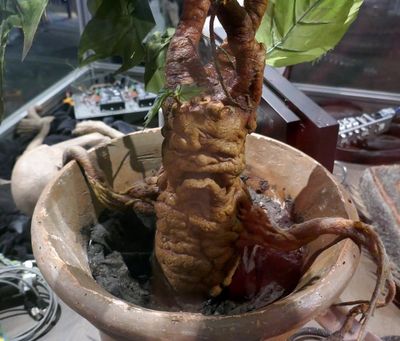About Mandrake History
The history of mandrake plants and their use and legends goes back to ancient times. Ancient Romans, Greeks, and Middle Eastern cultures were all aware of mandrake and all believed the plant had magical powers, not always for good. Mandrake is native to the Mediterranean region. It is a perennial herb with a large root and poisonous fruits. One of the oldest references to mandrake is from the Bible and probably dates to 4,000 B.C. In the story, Rachel used the berries of the plant to conceive a child. In Ancient Greece, mandrake was noted for being a narcotic. It was used medicinally for anxiety and depression, insomnia, and gout. It was also used as a love potion. It was in Greece that the resemblance of the roots to a human was first recorded. The Romans continued most of the medicinal uses that the Greeks had for mandrake. They also spread the lore and use of the plant throughout Europe, including Britain. There it was rare and costly and was often imported as dried roots.
Mandrake Plant Lore
The legendary stories about mandrake are interesting and revolve around it having magical, often menacing powers. Here are some of the most common and well-known myths about mandrake from earlier times:
The fact that the roots resemble the human form and have narcotic properties is likely what led to the belief in the plant’s magical properties.
The human shape of the mandrake root supposedly screams when pulled from the ground. Hearing that scream was believed to be fatal (not true, of course).
Because of the risk, there were many rituals surrounding how to protect oneself when harvesting mandrake. One was to tie a dog to the plant and then run. The dog would follow, pulling out the root but the person, long gone, would not hear the scream.
As described first in the Bible, mandrake was supposed to boost fertility, and one way to use it was to sleep with the root under a pillow.
Mandrake roots were used as good luck charms, thought to bring power and success to those who held them.
They were also thought to be a curse because of the supposed ability to kill with the root’s scream.
Mandrake was thought to crop up under gallows, wherever the body fluids of condemned prisoners landed on the ground. Disclaimer: The content of this article is for educational and gardening purposes only. Before using or ingesting ANY herb or plant for medicinal purposes or otherwise, please consult a physician, medical herbalist or other suitable professional for advice.
